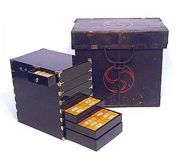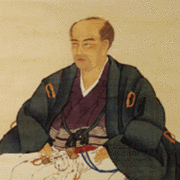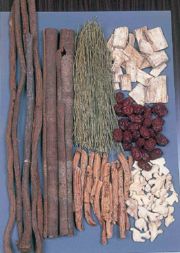Category:CD
m |
m (→{{Bilingual|漢方|Kampo Medicine}}) |
||
| Line 7: | Line 7: | ||
=={{Bilingual|漢方|Kampo Medicine}}== | =={{Bilingual|漢方|Kampo Medicine}}== | ||
| − | ==={{Bilingual| | + | ==={{Bilingual|漢方の英訳 ≠ Chinese Medicine|Kampo ≠ Chinese Medicine}}=== |
{| | {| | ||
| | | | ||
| Line 16: | Line 16: | ||
In the WHO document, Kampo is defined as "the medicine traditionally practiced in Japan, based on ancient Chinese medicine". We might call it "the traditional Japanese medicine" but this expression should include acupuncture and moxibustion treatment and is a larger concept than Kampo. | In the WHO document, Kampo is defined as "the medicine traditionally practiced in Japan, based on ancient Chinese medicine". We might call it "the traditional Japanese medicine" but this expression should include acupuncture and moxibustion treatment and is a larger concept than Kampo. | ||
| | | | ||
| − | ; | + | ;日本固有の医療としての漢方 |
「漢方」(文字通りでは漢の医方)は日本が[[Index:TCM|伝統中医学]](TCM)を独自に発展させたもので、16世紀には既に医術として確立していたようです。言葉自体は西洋医学(蘭方)に対する言葉として江戸時代中期に使われ始めました。TCMとの顕著な違いは'''漢方は西洋薬と同じ枠組みの中で処方される'''という点です。日本において漢方は補完代替医療ではなく、西洋医療と対立する概念ではありません。 | 「漢方」(文字通りでは漢の医方)は日本が[[Index:TCM|伝統中医学]](TCM)を独自に発展させたもので、16世紀には既に医術として確立していたようです。言葉自体は西洋医学(蘭方)に対する言葉として江戸時代中期に使われ始めました。TCMとの顕著な違いは'''漢方は西洋薬と同じ枠組みの中で処方される'''という点です。日本において漢方は補完代替医療ではなく、西洋医療と対立する概念ではありません。 | ||
<br/> | <br/> | ||
Revision as of 14:23, 17 March 2011
Kampo/Crude Drug Wiki (漢方・生薬Wiki)
Contents |
M e n u
| Crude-drug Top Gallery |
General Index | Names | Prescriptions | Books | Journals | Terminology | Chinese Medicines |
Kampo Medicine
Kampo ≠ Chinese Medicine
|
In the WHO document, Kampo is defined as "the medicine traditionally practiced in Japan, based on ancient Chinese medicine". We might call it "the traditional Japanese medicine" but this expression should include acupuncture and moxibustion treatment and is a larger concept than Kampo. |
 Portable Medicine Cabinet (Edo era; 1862) Reproduced with permission from Naito Museum of Pharmaceutical Science and Industry |
But do we say English or German medicine?
|
Why are we sensitive to either Japanese or Chinese?
Western medicine is based on chemical structures, and each structure is (or was) patented. In this sense, their origin is clear. On the other hand, traditional (especially herbal) medicine is one major intellectual-property issue related to biological diversity. It is therefore important to clarify origins and install an appropriate international standard. |
 Some of his recipes are still officially approved and used: Shiunko, Chuoko, and Jumihaidokuto. Picture is from Wikipedia. |
- Summary (more)
- Kampo Medicine
Mixed recipes of crude drugs in Japanese distinct style, originally based on classic literature such as "Shokanron" and "Kinkiyoryaku" from ancient China. - Traditional Chinese Medicine (TCM)
Mixed recipes of crude drugs in China. It is more flexible depending on patients' conditions and uses hundreds of raw materials from plants as well as animal origins. - Folk Medicine
Usually single crude drugs used by tradition or hunch.
- Society Information
The Standards for Kampo Formulas
|
|
 Recipe for "Kakkonto", or pueralia root decoction (More) |
- 一般用漢方製剤承認基準 (2010. 4. 1) (PDF in Japanese by MHLW)
Japanese Pharmacopoeia
Japanese Pharmacopoeia is a law
(Japanese) Pharmacopoeia is a book with legal force containing directions to identify and qualify medicinal compounds that may be used in Japan. Its revision process therefore requires utmost attention. Since it is a legal document, there are some side effects such as for the scientific name of Cinnamon.
- Crude Drugs in Kampo Medicine
- Japanese Pharmacopoeia (English version by MHLW)
Literature Information
This site contains 7677 article information on Kampo formulas. They are listed at the bottom of each page for Kampo prescription.
Availability, Production Methods, Examinations
Image Gallery
Pages in category "CD"
The following 8 pages are in this category, out of 8 total.